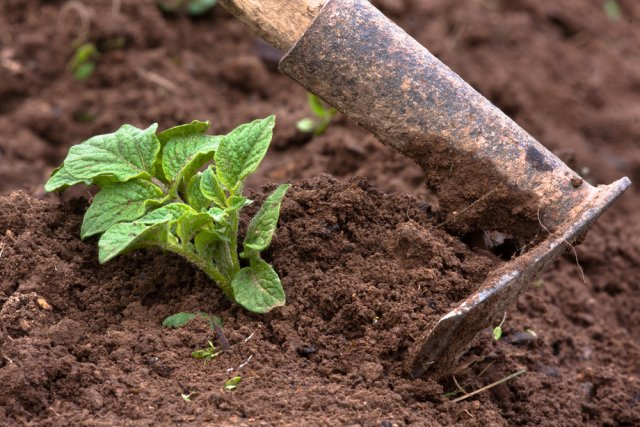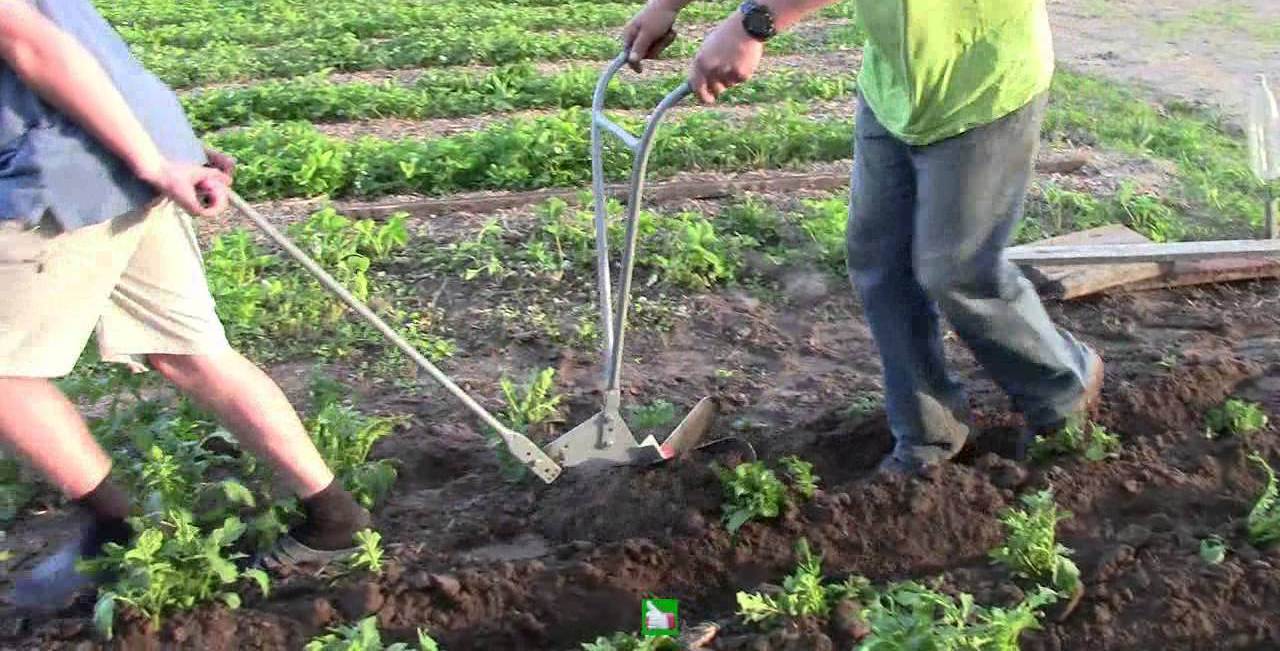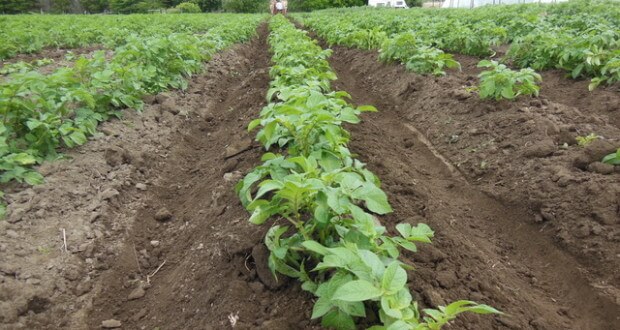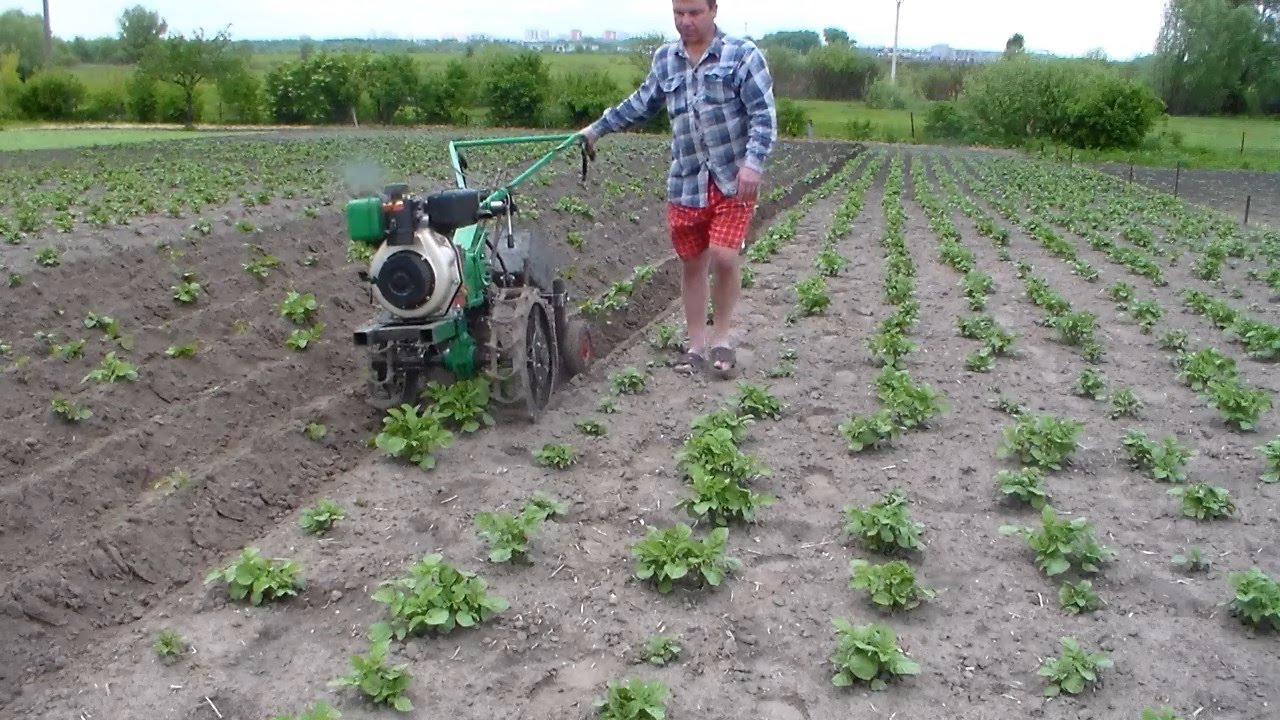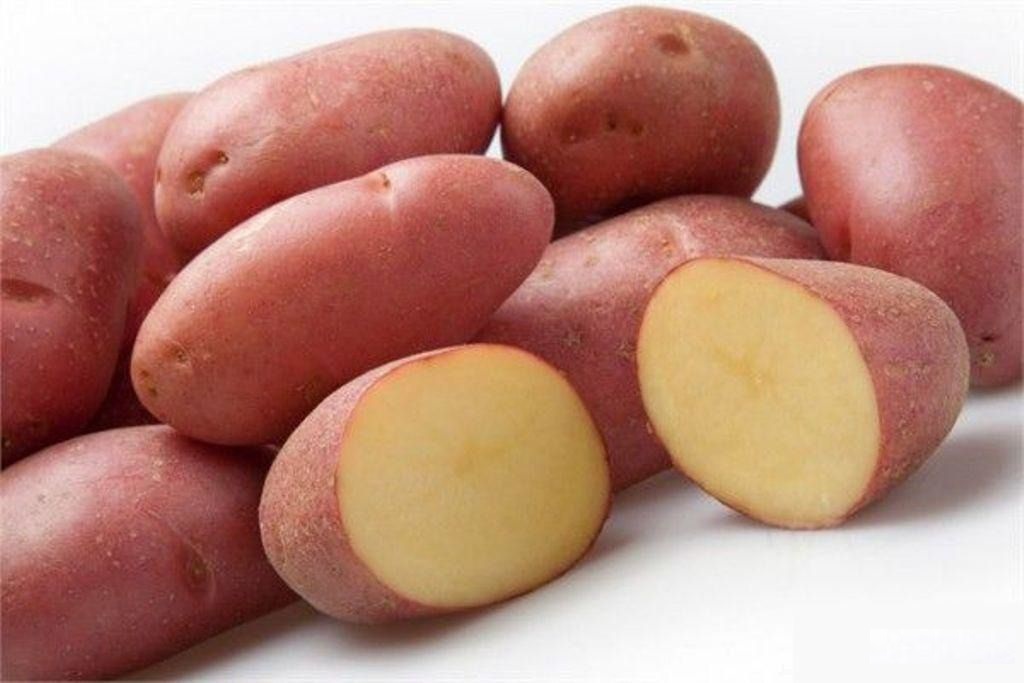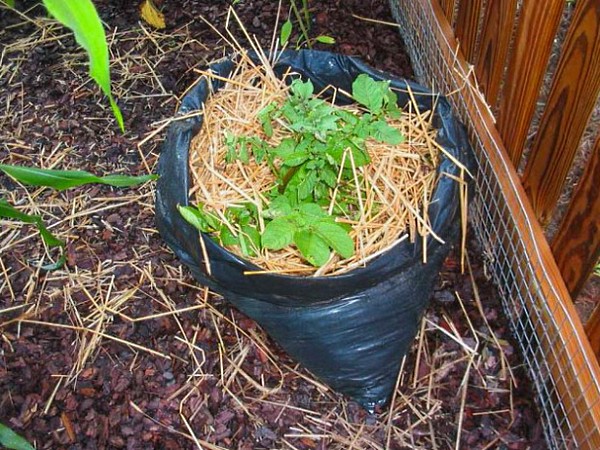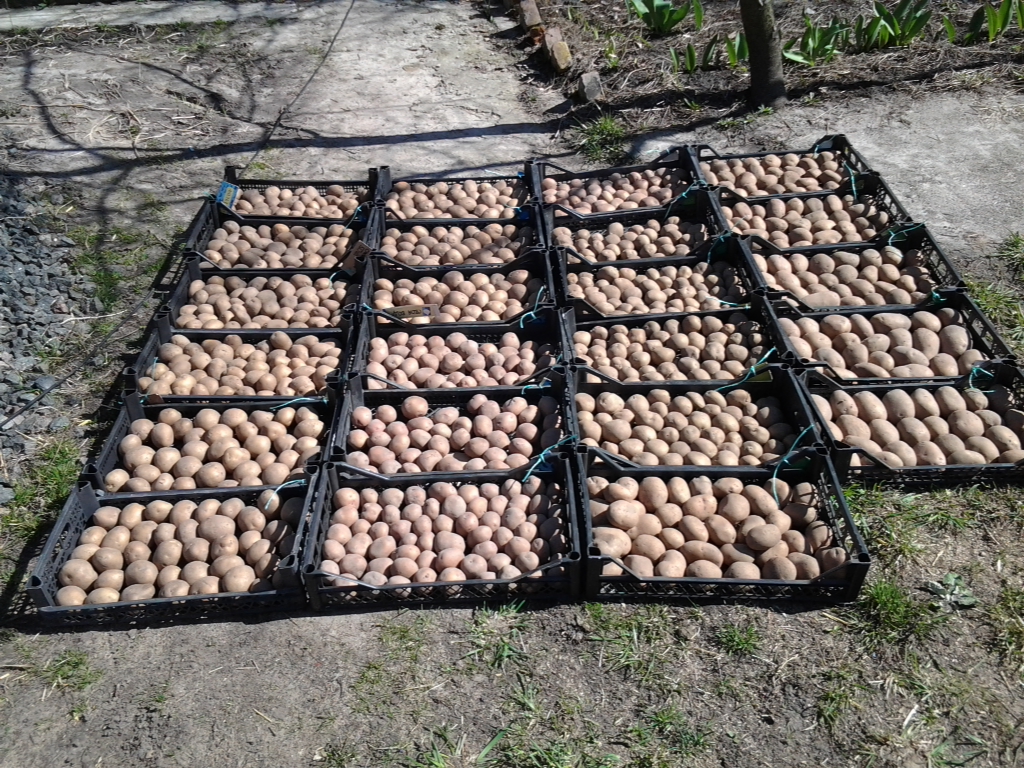Content:
Even if a person is very far from gardening, he knows that potatoes are periodically hilled. This is perhaps the most important process in the cultivation of this root crop.
What is potato hilling
Hilling potatoes is a procedure of shoveling (creating a "heap") to the root area of a bush of a certain amount of soil.
Some "advanced" gardeners consider such manipulations unnecessary and unnecessary, however, there are many explanations showing for what need to spud potatoes:
- helps in the fight against weeds in the potato field - it is much easier to pull them out of the dug soil than from the dense soil, and the roots of the weeds, once they hit the surface, immediately die;
- simultaneously with hilling, the beds are loosened, so the root system of the bushes gets free access to water and oxygen; excessive moisture during rainfall will not remain on the soil surface, which will prevent potato rotting;
- the fight against the main potato pest, the Colorado potato beetle, is facilitated, since when it hits the soil (scooped up to the stem), its larvae die en masse;
- it is easier to dig up the crop, since it is much easier to get it from the loosened soil and it can be done with less damage to tubers and agricultural tools;
- the potato bush becomes more protected against return frosts on the soil (potatoes are planted in the first half of May, and in the second half of May, cold weather comes, just at this time the plant sprouts), since the earth pulled into the mound works like a blanket;
- the winds also become fearless for plantings - a pile of earth serves as a reliable support for the still weak stems of the plant;
- hilling gives an impetus to the intensive growth of tops, the roots branch more strongly and form a larger number of tubers; denser foliage gives the plant more sunlight, therefore, photosynthesis processes are more active, this fills potato tubers with valuable insoluble starch;
- since the root system of a potato grows in a horizontal plane and can even go up, young tubers can grow too close to the soil surface and simply disappear without hilling (or their peel turns green under the influence of sunlight on one of the sides), thus it is possible to several increase productivity;
- inside the "heap" the formation of new ovaries is possible, so the number of tubers may even increase in comparison with those planted.
However, it cannot be said that the method of hilling potato beds is one hundred percent justified and correct, because sometimes negative consequences appear after it:
- in places where the soil comes from in order to rake it under potato bushes, arid areas of land appear;
- if the potato is initially planted deeply, additional "waste heaps" above it can disrupt the formation of its roots with tubers;
- if you huddle too high or too low, young root crops may not develop properly.
There are situations when hilling is not required:
- in areas with low air humidity and difficult irrigation conditions;
- if you plan to plant potatoes under a black non-woven fabric;
- if the directly opposite procedure is used - uncoiling, the stems of the plant are spread over the surface, sprinkled on top with a layer of soil (the upper shoots remain outside), straw, mown grass, sawdust can also be used; after the growth of new tops, the procedure is repeated. This method of growing potatoes gives good results (similar to hilling), although it requires a much larger area of the beds.
How many times to hilling
Vegetable experts strongly recommend hilling twice during the growing season (summer), the interval between them should be a couple of weeks, the second is carried out right before the flowering of the plant. However, with an early first hilling, it may be necessary to carry out a third (or even a fourth) procedure; for its implementation, it is necessary that the bushes reach at least 25 centimeters of growth, in this case, hilling is reduced to only a small raking of the earth to the base of the stem.
It is highly discouraged to huddle in hot weather during the daytime - this can harm both the plant and the gardener himself. If the summer is hot this year, you will have to work in the potato field in the evening or early in the morning. It is best to carry out hilling after rain - the moist soil does not crumble in all directions, and also contributes to a more intensive formation of underground shoots with young tubers, which will increase the yield of the garden. If there is no rain, and the time for the procedure has come, you can simply water the bushes with plain water.
How to huddle for the first time
The first question for novice potato growers is when to spud potatoes for the first time? According to the recommendations of agronomists, this should be done as soon as the first green leaves appear above the soil surface, as a rule, it is 0.1 meters in height. You can safely cover them with earth, without fear that young plants will suffocate and will not break through to the top. Potatoes will sprout in any case, besides, its rhizomes will grow and give new shoots with tubers.
Ways of carrying out the procedure
Gardeners have several options for hilling, depending on the area of crops, physical and material capabilities of workers.
Hilling by hand
Potato plantings are manually processed from the very beginning of the cultivation of this vegetable. It (processing) is physically difficult, it takes a lot of time to carry out, however, such work does not require complex tools or equipment - a hoe or a wide-blade boot will do.
Hilling is carried out in one direction on the entire row, then they go to the opposite. The ends of each bed are completed with high piles between the rows. This technique is very necessary, since it allows you to save water that gets on potato plantings with rain or after watering, which is very important for this moisture-loving crop.
To facilitate the rather hard work of hilling potatoes, the so-called manual hiller was invented, which is sold in any "garden" store. It is also easy to make it yourself. The device consists of one handle and two moldboard parts: the summer resident pulls it in front of him by the handle, directing the moldboards between the ridges.
Hilling with a hand cultivator
An easier way of hilling is to use a hand cultivator.The disc cultivator functions quite simply: a special knife cuts the soil and lifts its layer, at this time two discs rake the soil to the base of the bush. It is impossible to cope with the cultivator alone: one worker must carry it with him, and the second must forcefully press on the knife part of the apparatus.
Hilling with a walk-behind tractor
If the planting of potatoes occupies more than half a hectare, you cannot cope with a hiller or cultivator, you must use a walk-behind tractor, for example, the rather popular Salute. With its help, you can quickly spill rather long beds. In addition, it is a versatile device that can be used not only as a hiller, but also as a plow, irrigation pump and cultivator. If you take a powerful (more than 8 hp) walk-behind tractor, then it can work as a full-fledged tractor or mini tractor.
As in the case of using a manual hiller, before operating the walk-behind tractor, the ground must be moistened and allowed to dry out a little (otherwise the wheels of the unit will get stuck in the mud). Weeds do not need to be removed - they will be pulled out when hilling with knives. Conventional walk-behind tractors are three-moldboard, which makes it possible for them to spud three rows of plantings at once. A plow attached to the rear of the machine helps to scoop up the soil onto the potato bushes.
Almost all potato planting requires hilling - a heap of earth on the stem of a bush, which can be carried out both manually and in a motorized way. The first hilling of potato bushes should be done when the first shoots rise 10-15 centimeters above the ground. Regardless of the method, this procedure has a beneficial effect on the quantity of the potato crop and its quality.

